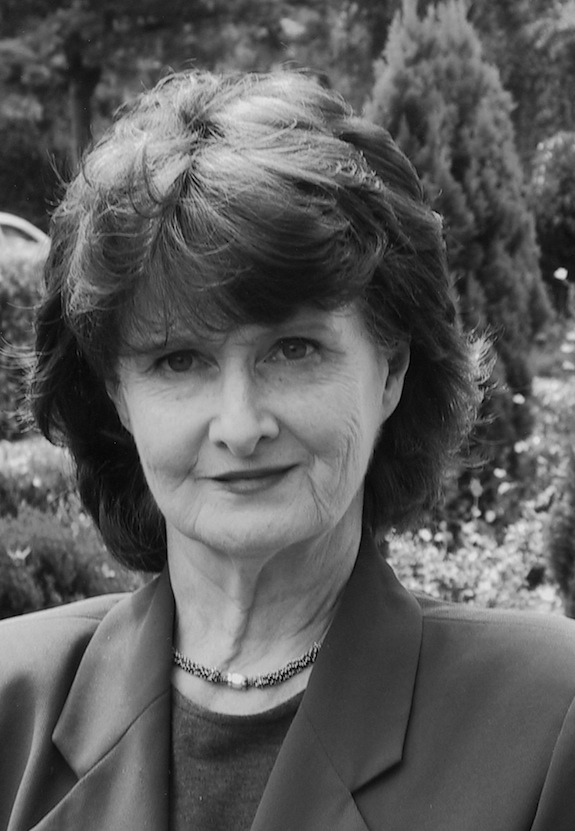Poetry Matters: Women’s Work: Toward a New Poetic Language
For Women’s History month, curator David C. Ward considers the steady ascendency of poets from Emily Dickinson to today’s Eavan Boland
![]()

Portrait of Marianne Moore by George Platt Lynes from the exhibit, “Poetic Likeness: Modern American Poets” at the National Portrait Gallery, courtesy of the museum

Historian and poet David Ward contributes monthly musings on his favorite medium. He recently wrote about Phillis Wheatley.
In 1855, Nathaniel Hawthorne complained to his publisher:
“America is now wholly given over to a damned mob of scribbling women,
and I should have no chance of success while the public taste is occupied
with their trash.”
Hawthorne’s contempt seethes with the sneering and patronizing discrimination of his era; and demonstrates the double bind of a lot of discriminatory attitudes—the outcast form their own counter-culture, and are further condemned for it. Banished from the highest echelons of literary culture, women responded by tapping a popular audience hungry for “domestic” fiction—romances and the like. They were, then, criticized for undermining serious culture. Nice!
Hawthorne’s superiority, coupled with his angry self-pity, is a particularly bald statement of the obstacles that women writers faced in 19th-century America. But it also inadvertently reveals that women were active producers and consumer of literary culture. Yet, how long would it take for women to be treated on equal terms with men? And how would women authors affect the form and content of American poetry and fiction?
The case of poetry is particularly interesting both in tracing the arrival of women poets, but also for the way that gender influenced and changed the very form of poetic writing.
Hawthorne may have let slip what a lot of people thought about women writers; discrimination is always a tangle of personal and societal motivations. It took a long time to untangle things.
In American poetry, there were outliers like Phillis Wheatley (1752-1784) and a century later, Emily Dickinson (1830-1886). Dickinson is the archetypical undiscovered genius: now considered one of America’s greatest poets. Virtually unknown and unread in her own lifetime, she wrote over a thousand poems, concise masterpieces about faith, death and the terrible beauty of life.
One suspects that when she wrote: “The soul selects her own society,/Then shuts the door,” she was referring not only to her own shyness, but also to the way that society shut the door on certain sensitive souls. It was only by hiding herself away in her Amherst, Massachusetts, home that she freed herself to write.
Writing poetry is such an odd business that it’s dangerous to try to draw a direct connection between improvements in the legal or social conditions of women and the quality of poetry written by them. Nonetheless, movement on civil and social rights did have a general, positive impact, especially as women gained access to higher education.
At the turn of the 19th century, Hilda Doolittle studied Greek literature at Bryn Mawr college and came under the patronage of Ezra Pound who wrote poems for and about her as well as encouraging her to cultivate a style influenced by the imagistic forms of Asian poetry. Her poem “Sea Rose” begins in almost haiku style:
“rose, harsh rose,/marred and with stint of petals,/meager flower, thin. . .”
Indeed, Pound bestowed Doolittle with the moniker, “H.D. imagiste. The H.D. stuck as her pen name although her verse became less imagistic as her career—and her religious faith—developed.
As a student in Philadelphia, Doolittle met other poets. Together, she along with William Carlos Williams and especially Marianne Moore formed, under Pound’s tutelage, the first generation of modernist American poets. And it was Moore who cracked the proverbial glass ceiling for women poets. Establishing herself, in a way that Langston Hughes did for African Americans, Moore became the poet who would command serious consideration from the literary establishment because the quality of her work could not be denied. Competing equally with poets like Pound or Williams or Frost influenced the kind of poetry that Moore wrote, over and above questions of personal choice and temperament. A particularly astute naturalist, Moore delighted in beauty and elegance of the animal world:
“I remember a swan under the willows in Oxford,
with flamingo-colored, maple-
leaflike feet. It reconnoitered like a battle-
ship.”
In her poem about “Poetry” she confessed that “I, too, dislike it” but verse gave rise to voice:
“hands that can grasp, eyes/that can dilate/hair that can rise”
In creating a genealogy of American women poets, Moore is important for those she helped and mentored, especially Elizabeth Bishop.
Bishop, like Moore, handled the “women’s question” by ignoring it. They were modernist poets, who happened to be women and they didn’t spend much energy—in public anyway—considering their political predicament. Instead, they created poetry that was ordered by their close observation of the natural world and human society. The results offer the annealed and detailed quality of an Albrecht Durer etching. Consider these lines from Bishop’s famous poem, “The Fish” (Moore had written a poem with the same title so Bishop is paying homage to her mentor),which begins with the immediacy of “I caught a tremendous fish”
“He was speckled with barnacles
fine rosettes of lime,
and infested
with tiny white sea-lice,
and underneath two or three
rags of green weed hung down.”
After 75 lines of exquisite observation, the final line is simply: “And I let the fish go.”
A double entendre, perhaps, since Bishop has created the fish in her poem and now lets it and the poem out into the world. Bishop’s tightly packed, carefully considered poetry (she was notable for the time she took before she was satisfied with her work and would release a poem for publication), fit into a solitary and somewhat reclusive personality.

Portrait of Adrienne Rich by Joan E. Biren from Ward’s exhibit, “Poetic Likeness: Modern American Poets” at the National Portrait Gallery, courtesy of the museum
As American poetry became more personal and confessional after World War II—Bishop’s great friend Robert Lowell led the way and she chastised him for making his verse too personal—women poets began to depart from the model created by Moore and Bishop. As the personal became political, so also did it become poetical and then again political as well.
Sylvia Plath’s coruscating poems about the emotional airlessness of middle class life; the analogy of her house to Auschwitz and her father to Hitler still shock. Others didn’t have the audacity—or the sense—to go that far, but the physical and emotional state of women now became a subject that could be raised in print instead of sublimated or kept out of public view.
The line of ascendency started by Plath and pointing to contemporary poets like Sharon Olds and Louise Gluck, who have focused on the body (their bodies), draws wider connections and resonances.
With women assuming a larger place in the literary canon, they have also begun questioning the very nature of language itself. In particular, is language necessarily patriarchal? The career of the great Adrienne Rich is key here. Rich was tremendously talented even as an undergraduate, her books won prizes, but in the 1950s she became aware that her poetic voice was not her own. Rich self-consciously re-made her poetics to suit her emerging feminist consciousness. Her poem “Diving into the Wreck” describes her purposes:
“I came to explore the wreck.
The words are purposes.
The words are maps.
I came to see the damage that was done
‘ and the treasures that prevail.”

Contemporary poet Eavan Boland, courtesy of the poet
The contemporary Irish poet Eavan Boland has taken up Rich’s task. Writing her way out from under the patriarchal inheritance of Irish literary traditions, Boland radically stripped her language and lines down to the essentials. In a series of autobiographical investigations, she remakes language, expressing not only her own artistic autonomy, but the multitudinous roles and traditions that she embodies as a modern woman writer.
In “Mise Éire,” Boland offers:
“a new language/is a kind of scar/and heals after a while/into a passable imitation/of what went before.”
Boland is too modest here: the wounding scar becomes a new language altogether and something else entirely.
What Hawthorne would make of women taking possession of the language and subjects of poetry and making it their own is hard to imagine. One hopes he would have grown with the times.